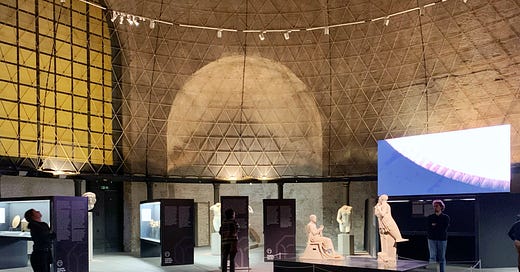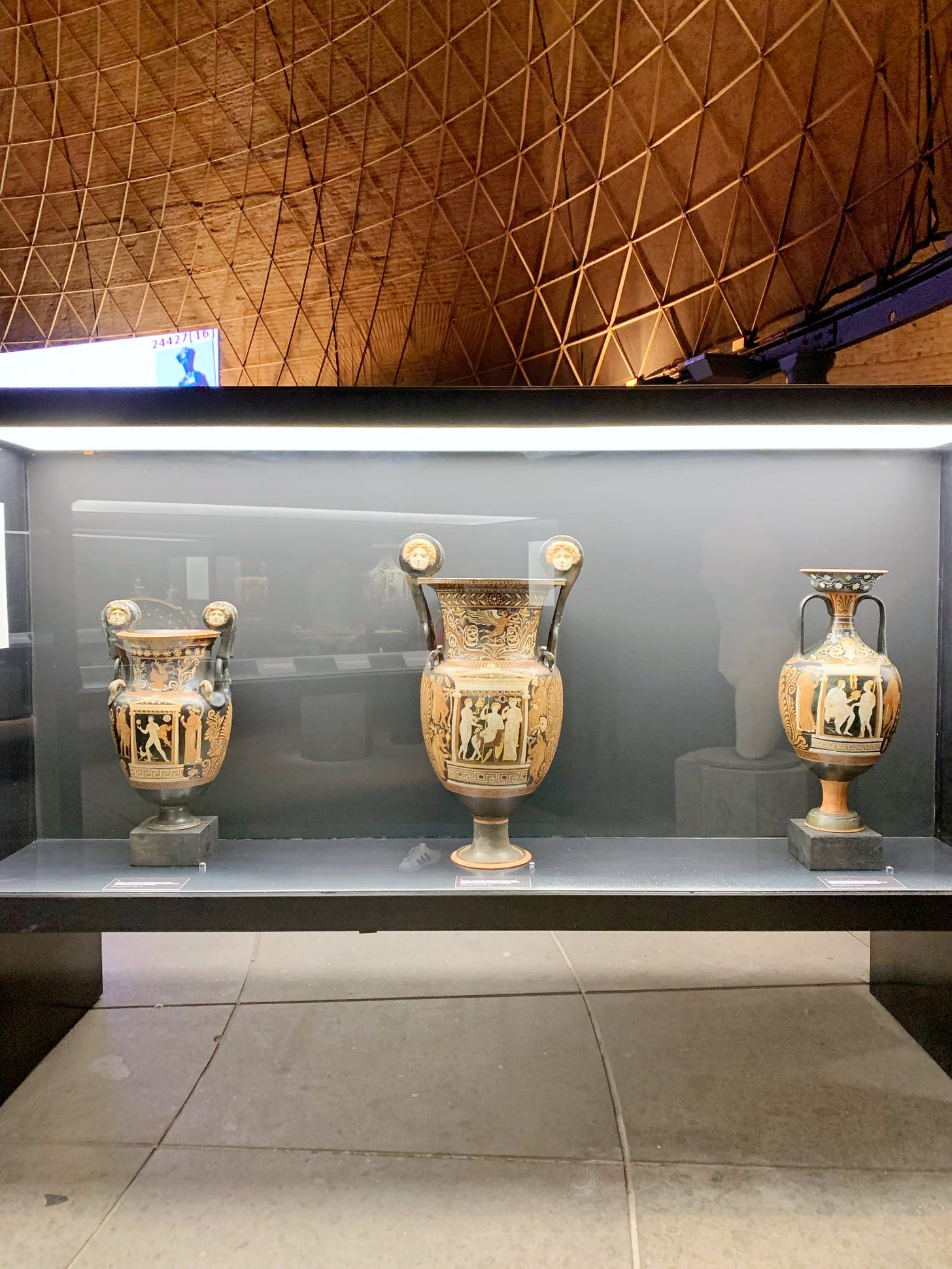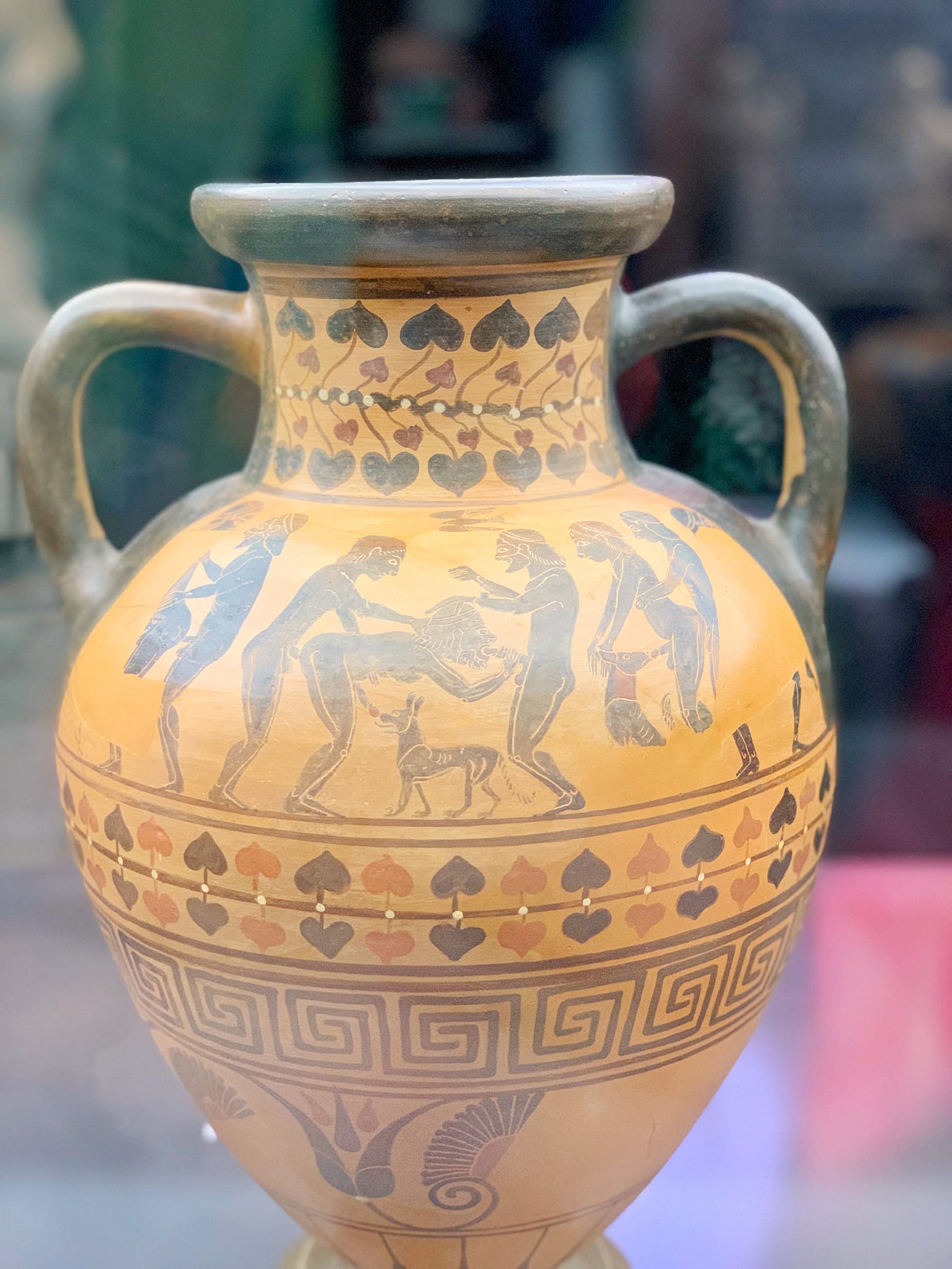Have you ever admired the ancient Roman and Greek sculptures, painted pottery, silver coins, and other items on view at museums in the U.S. or the U.K.? If so, did you ever stop to think about how those precious antiquities ended up there?
The Metropolitan Museum of Art, for example, boasts that its collection—which contains some 30,000 pieces—is “among the most comprehensive in North America.” The Getty Villa in Pacific Palisades was modeled on the ancient Roman Villa dei Papiri in Herculaneum. Around half a million people every year visit it to admire the antiquities collected by J. Paul Getty, the oil magnate who also had a villa on the Lazio coast north of Rome (now a five-star hotel called La Posta Vecchia). The Museum of Fine Arts in Boston, which has some 17,000 pieces of ancient Greek and Roman Art, declares on its website that “most was purchased on the European art market, beginning in 1885 under the leadership of Edward Robinson, the first classical art curator in a US art museum, and through the agency of antiquities collector/dealer and Boston native Edward Perry Warren.”
The Anglo-Saxon fascination with ancient Greek and Roman culture can be traced back at least to the 18th century, when the Grand Tour became a rite of passage for young aristocrats, artists, and writers like Henry James. They often traveled around Europe for as long as three or four years, spending an extended period of time in Italy. Needless to say, when they went home, they didn’t bring back cheap tourist trinkets—they preferred souvenirs like ancient sculptures, vases, or, say, the Elgin Marbles.
It was around this time that the discipline of archeology was born with the excavations of Pompeii and Herculaneum. Prior to the 1700s, artists like Michelangelo and Raphael found inspiration in classical art and architecture, but it wasn’t protected as it is today. As Elisa Valeria Bove of Roma Experience told me during a tour of the Roman Forum, Michelangelo lived on present-day Piazza Venezia and often visited the Forum. Back then, ancient sites were often looted, valuable gold, silver, and bronze stolen, and marble reused to build churches.
Despite knowing all of this, I was floored to learn about the massive extent of antiquities looting that has continued into the present day during a visit to the Museo dell’Arte Salvata (the Museum for Rescued Art), which opened this summer in Rome. The museum itself is quite small—just one room annexed to the Baths of Diocletian—but the idea behind it feels groundbreaking. Here, in this room, antiquities that were rescued from natural disasters or shipwrecks in the Mediterranean or illegally looted and sold on the black market to museums (including the aforementioned Met, Getty Villa, and the MFA in Boston), auction houses, and private collectors are put on display temporarily before being returned to their rightful homes.
According to the New York Times, Italy’s Minister of Culture Dario Franceschini got the idea for the new museum when the Euphronius Krater (a beautifully painted vase from 330-320 BCE) and a drinking cup also by Euphronius were returned by the Met and the Getty Museum, respectively, and sent to the archeological museum in Cerveteri, a coastal town about an hour north of Rome. (The Met paid the unprecedented sum of $1 million for the Krater in 1972, presumably not knowing that it had been looted from a tomb in Cerveteri, though this 1972 New York Times article announcing the acquisition says that the Met’s people “will discuss neither its provenance nor its price,” which seems a bit suspicious to me.)
The exhibition I saw displayed sculptures, silver coins, and incredible examples of painted pottery dating back to the 7th century BCE, including one rather memorable vase with erotic scenes. But for me what really made the exhibit worth seeing was the text written on panels in all of the display cases telling the story of how the investigations by the Carabinieri from the Command for the Protection of Cultural Heritage uncovered that these objects had been smuggled out of Italy, trafficked through Switzerland, and sold in the U.S. It was mind-boggling to realize that the items displayed there are just a small fraction of the pieces that have been returned.
Who knows how many more pieces are out there? Will the creation of this museum and widespread public support for returning looted artifacts to their countries of origin prompt other museums to return items from their collections? Should they?
I have more questions than answers. What do you think?
Further Reading
Might the British Museum finally return the Elgin Marbles to Athens? According to a recent article in the BBC, a deal might be within reach.
This New York Times article has more details about the Museo dell’Arte Salvata.
Though it’s no longer on view, the “Torlonia Marbles” exhibition showcased the aristocratic Torlonia family’s collection of Roman sculptures, busts, reliefs, vases, and sarcophagi, which were hidden away from view since 1976. I wrote about the exhibit, which debuted at Rome’s Musei Capitolini and traveled to Milan, for Architectural Digest.
I also wrote this roundup of the 10 best ancient sites in Rome for Fodor’s, in case you’re planning a trip and want to know what to visit.









It is such a complicated and knotty issue. John Oliver just did an interesting show about it. I think the the Parthenon Sculptures should go back to Greece but I was more conflicted seeing the extraordinary terra cotta pieces, Orpheus and the Mermaids. Here in Rome we have so much treasure, maybe these particular pieces should stay in Malibu so that people who cannot travel to Italy can see them?